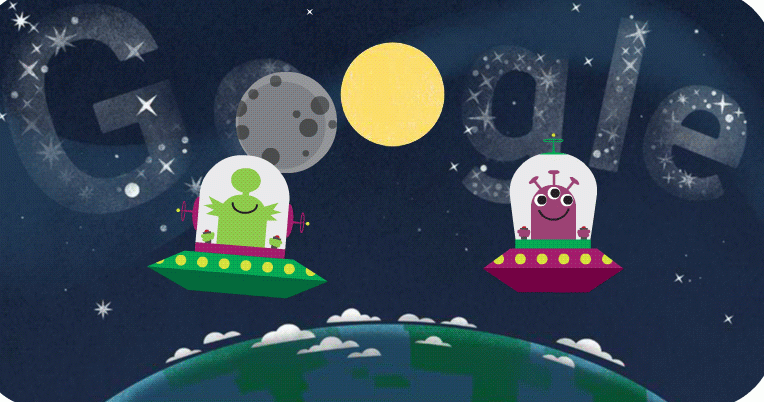
Google The Great American Eclipse 2017 Google Doodle.
The August 21, 2017 Google Doodle is, fittingly, the Great American Eclipse 2017.
“Skywatchers on the American continent today are in for a special astronomical treat: front row seats to a total solar eclipse. An eclipse occurs when the moon passes between the sun and the earth, blocking the light of the sun from reaching us,” Google explained.
Google has taken pains to include solar eclipse science along with the art. That’s because the eclipse is a rare event that provides a unique opportunity to engage the public, including children, in science education.
Here’s what you need to know:
1. A Total Eclipse Hasn’t Crossed the Width of the United States for 99 Years
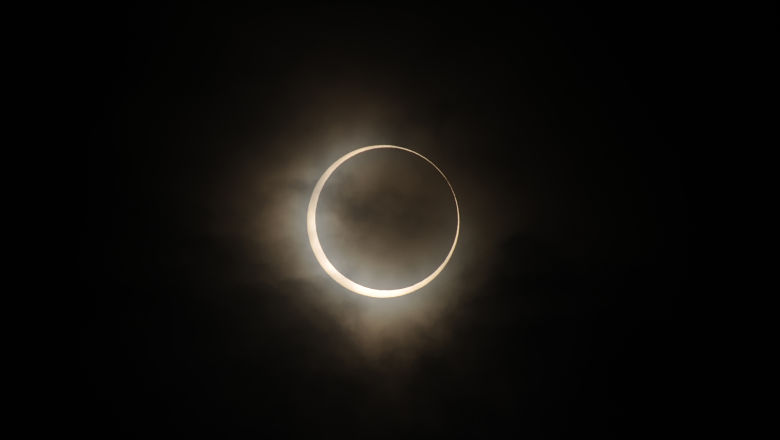
Getty
How rare is a total eclipse? “While eclipses aren’t rare, a total eclipse, when viewers from Earth are at the very center of the moon’s shadow, only happens once every 18 months. To see one requires you to be in just the right place on earth, and a total eclipse in the same location only happens every 375 years on average,” according to Google.
However, they are extremely rare for the United States. “It’s been 99 years since an total eclipse crossed the width the United States,” Google explained. “This year, the 65-mile wide path of totality with sweep, sash-like, across the country—entering the map at Oregon and exiting at South Carolina. The once-in-a-lifetime spectacle will attract an estimated 7.4 million people to areas in the path of totality, including so-called eclipse-chasers, who plan for years in advance and travel from far and wide to get a glimpse of the stellar phenomenon.”
According to Space.com, “The total solar eclipse will cross from Oregon to South Carolina along a 70-mile-wide (110 kilometer) “path of totality.” In North America, people outside of the path of totality will see a partial solar eclipse. Totality will last, at most, about 2 minutes and 40 seconds at the center of the path, so bad weather could potentially block the main event.”
According to NASA, “Over the course of 100 minutes, 14 states across the United States will experience more than two minutes of darkness in the middle of the day. Additionally, a partial eclipse will be viewable across all of North America. The eclipse will provide a unique opportunity to study the sun, Earth, moon and their interaction because of the eclipse’s long path over land coast to coast. Scientists will be able to take ground-based and airborne observations over a period of an hour and a half to complement the wealth of data and images provided by space assets.”
2. Google Is Imparting Additional Solar Eclipse Facts Via Its Animated Aliens
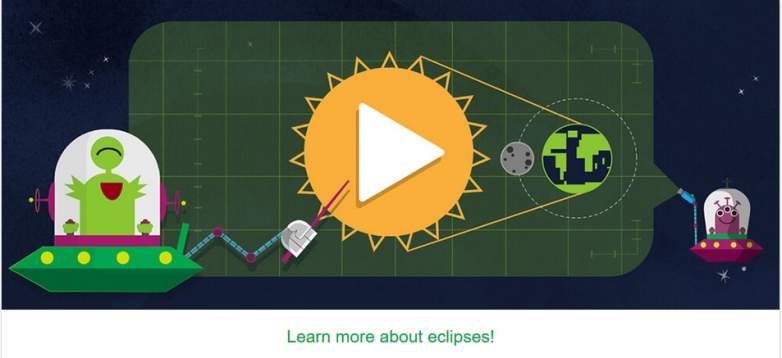
The Great American Eclipse 2017 Google Doodle educational aliens.
Google is using the Google Doodle to educate the public about solar eclipse science. People are encouraged to click through the Google Doodle to “learn more about solar eclipse science.”
For example, if you click on one of the aliens, it informs you, “There are two kinds of eclipses: lunar and solar. In a solar eclipse, the moon comes between Earth and the sun, casting a shadow on the surface of Earth.”
If you click on another alien, you learn, “A lunar eclipse occurs when Earth comes between the sun and a full moon, blocking light from the sun and casting a shadow on the surface of the moon.”
Another Google alien educates the public about animals’ reaction to solar eclipses, saying, “Eclipses affect animals too: the sudden darkness and resulting drop in temperature during a total solar eclipse can cause critters to behave as if it were dusk.”
NASA has an “Eclipse 101” page that offers detailed information on solar eclipses, including maps, times, safety, history, and a glossary.
3. Google Is Pushing a Crowd Sourced Photo Project With the Google Doodle
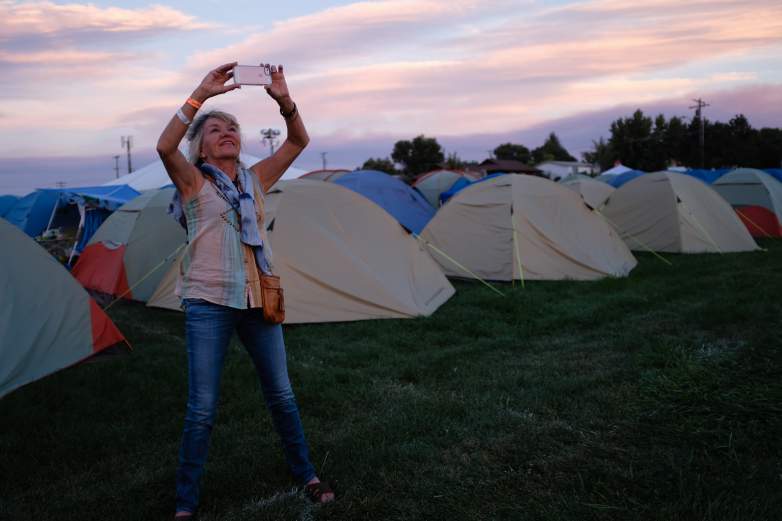
GettyOne of many total solar eclipse enthusiasts gathering in Madras, Oregon and staying in organized campgrounds, the rural central and eastern part of Oregon is hosting dozens of festivals to help manage the crowds a million visitors are expected to the region for Monday August 21, 2017.
Google also suggests that people interested in the solar eclipse can “learn about a crowd-sourced photo project to capture images of the eclipse as it traverses North America.”
The link goes to Eclipse Mega Movie 2017, which says, “We’re in the process of collecting photos from all along the path of totality. Our Eclipse Megamovie Photo Team has been busy uploading the photographs they took of the total solar eclipse and our algorithms are creating the continuous view of the eclipse as it crossed the US. The first version of The Megamovie should be available the afternoon of the 21st. We’ll put out new, improved versions of the video as more of our volunteers upload their photos.”
4. Make Sure That You Stay Safe During the Great American Eclipse 2017
The safest way to watch the eclipse? NASA’s livestream, which Google also links to with the Google Doodle. NASA’s page also offers live video feeds of the solar eclipse from around the United States.
It’s important that you protect your eyes during the eclipse by not looking directly at it. According to NASA, you can injure your eyes if you do so. NASA also says, “looking directly at the sun is unsafe except during the brief total phase of a solar eclipse (‘totality’), when the moon entirely blocks the sun’s bright face, which will happen only within the narrow path of totality.”
NASA continues, “The only safe way to look directly at the uneclipsed or partially eclipsed sun is through special-purpose solar filters, such as “eclipse glasses” (example shown at left) or hand-held solar viewers. Homemade filters or ordinary sunglasses, even very dark ones, are not safe for looking at the sun; they transmit thousands of times too much sunlight.” NASA’s website contains detailed safety tips.
Another great resource on the Great American Solar Eclipse of 2017 is the American Astronomical Society’s solar eclipse page. The page explains, “On Monday, August 21, 2017, all of North America will have a solar eclipse. The Moon will cover at least part of the Sun for 2 to 3 hours. Halfway through, anyone within a narrow path from Oregon to South Carolina will experience a brief total eclipse. The Moon will completely block the Sun’s bright face for up to 2 minutes 40 seconds. Day will turn into night, and (weather permitting) one of nature’s most awesome sights will become visible: the Sun’s diaphanous outer atmosphere, or corona. This website is your guide to the event!”
5. It’s Easy to Look Up How the Solar Eclipse Will Affect Your City & Zip Code
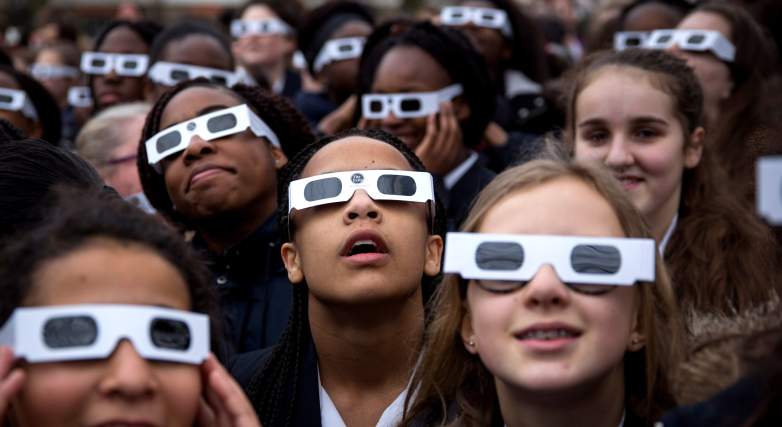
Getty
There are ways you can get detailed information by looking up information on the solar eclipse by zip code and city name.
The Courier Journal newspaper has developed an interactive map in which you can enter your zip code or city name into the search bar and generate detailed information about the solar eclipse in your area. You can access it here.
The path of totality won’t touch all states. For most communities, you will receive a percentage less than 100%, which represents what percentage of the sun will be covered by the moon during the solar eclipse 2017.
TimeandDate.com has a zip code search for the eclipse. Just go to this site and type your zip code into the search bar and you will get detailed information on the eclipse in your area. You can also search by city name if you prefer.
You can also use the Eclipse Map created by TimeandDate.com. It allows you to type in your location to get more information about the eclipse in your area. “You can select any location to see when the eclipse starts and ends, and how much of the Sun is obscured there,” the site reports.